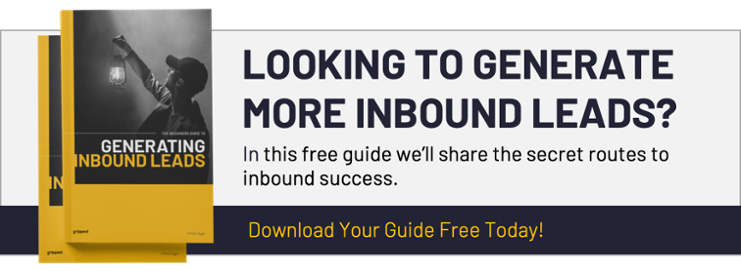In a digital-first world that has become obsessed with personalisation, simply broadcasting your marketing to a wide range of potential customers is no longer an effective way to get your messages out. That’s why a strategy focused on account-based marketing (ABM) has become so popular in recent years.
According to one survey, more than 60% of businesses were considering the launch of an ABM strategy this year. We’d be willing to guess that this number is even higher in the Software as a Service (SaaS) world, which depends on large company customers to build long-lasting partnerships.
If you’re curious, you’ve come to the right place. In this guide, you’ll learn more about the basic concept of account-based marketing and its various benefits. But we’ll also explain a process that you can apply to your marketing strategy to effectively reach high-value accounts through comprehensive ABM campaigns.
Section 1:
What is Account-Based Marketing?
In its simplest form, account-based marketing is a strategy that focuses marketing efforts on engaging an identified set of target accounts. Marketing and sales teams align on personalised messaging for high-value prospects and tailor buying experiences towards them.
As you might imagine, this type of marketing approach is particularly useful in situations with multiple decision-makers, as you are able to simultaneously target different stakeholders with the benefits your SaaS product has specifically for them.
How Does Account-Based Marketing Connect with Inbound Marketing?
You might think of account-based marketing and inbound marketing as incompatible, and it’s easy to understand why:
- Inbound marketing focuses on lead generation through relevant content and value, then uses marketing automation to qualify and convert those leads.
- Account-based marketing seeks out a single company and the relevant decision-makers, or a set of pre-identified companies within an industry.
In reality though, they’re actually both better when building on each other.
As it turns out, relevant content and value matter just as much for individual accounts as they do for broader market segments. The marketing automation principles of inbound marketing also apply here. You can even find new accounts through your lead generation efforts.
The only difference, again, is the size of your market segment. That’s an important fact to keep in mind throughout this guide.
Section 2:
5 Benefits of Account-Based Marketing
Especially for b2b SaaS businesses, ABM has become so relevant that it’s almost impossible to ignore. When you’re trying to focus on key accounts with multiple decision-makers, account-based marketing has 6 core benefits:
- Better Personalisation. Focusing an entire campaign on a select number of accounts means being able to focus much more specifically on their pain points and needs. That’s a crucial advantage, especially because 80% of b2b buyers now expect true personalisation.
- More Focused Marketing Investment. Focusing your marketing spend on targeting individual customers on your account list means making sure that your investment is spent on a lead that is, to some degree, already qualified. You might still need some general brand awareness and broad-reaching campaigns, but each of your ABM efforts will be spent safely.
- A Shorter Sales Cycle. On average across marketing strategies, only about 4% of leads convert to customers. That means your sales team spends 96% of their time on leads that don’t generate revenue. In ABM, that ratio is much higher, allowing your sales team to spend more time on leads that matter and shortening the sales cycle in the process.
- Better Relationships With Existing Customers. Churn is a crucial SaaS metric and can go as high as 58% annually for some software startups. While ABM is not the only magic solution, it can help. Customers acquired through ABM already have a relationship with you by the time they sign the contract, and are more likely to know what they’ve signed up for, and become easier to satisfy, often leading to subscription renewals.
- Improved Sales and Marketing Alignment. In ABM, marketing and sales pull the same strings. They’re both focused on the same customers, and have the same goals. The result is a natural alignment that is much harder to achieve in traditional marketing-sales setups.
Section 3:
6 Steps to Launch an ABM Campaign
Enough with the theory. You know ABM works and the stats bear out that statement. So let’s start talking about how you can make this strategy work for you. These 6 steps can help you launch an ABM campaign for any account you’re looking to target.
1. Find Your Target Audience
The basic concept is no different than it would be in any other marketing campaign, but the process of finding your target audience is a bit different.
Try to identify and segment specific firms into their differences in firmographic data, which includes things like industry, company size, and annual revenue. Using this data, you can understand which companies are in the best position to buy your product, from both a use-case and a financial position perspective.

Ideally, you should come out of this step with a good general idea of which firm(s) you should target based on their overlap with and need for your SaaS solution.
2. Dig Deep Into Key Accounts
Following the general market identification, it’s time to get specific. For each key account in your list, you should get as specific as possible about your insights into them before you start any marketing efforts. That includes focusing on factors like:

- Strategic data, including the company’s goals and desires as it relates to your industry and solution.
- Company structure, including an idea of who the decision-makers are – both formally and informally.
- Pain points, digging deeper on goals to find the areas in which your target firm has an unmet need.
Some of this data will be easier to find than others. For instance, you can use LinkedIn to find out a lot about company structure, including both hierarchical structure and key decision-makers in the software buying process. Other information might not come until you’ve first made contact with your key account.
3. Begin to Build Your Content Strategy
Once you have a good understanding of your account and its components, start thinking about the content you want to use to build your marketing strategy.

Great content in account-based marketing accomplishes two things:
- It addresses larger business pain points for the account as a whole
- It addresses the pain points and needs of individual players with each account.
That duality can be difficult to accomplish, which is why a comprehensive content strategy is so important. This is where your ability to personalise your marketing to your audience becomes so crucial.
Think about the types of content you need to get in front of your audience. Think about how it might shift and adjust based on each contact within the account. Then, begin to create that content for your audience.
Want some guidance on your account-based marketing strategy?
Use our FREE growth audit to assess your current sales and marketing strategy and we’ll work with you to build an actionable plan for your ABM campaign.
4. Create Your Marketing Tactics for Campaign Execution
Core content pieces will likely live on your website like they do with all other types of marketing. Your ‘features’ and ‘solutions’ pages for your SaaS platform will be an essential component, but so will blog posts and long-form pieces like eBooks that are less promotional and more targeted towards pain points.

The next consideration is exactly how you can make sure that content reaches your audience. The right channels are crucial here to maximise your opportunities and get your message in front of key account decision-makers.
LinkedIn is a natural platform for b2b marketing, but it’s not your only opportunity. Facebook and Twitter both have increasingly relevant audiences for business-focused sales operations. And of course, email and messaging services like LinkedIn’s InMail are core pieces in trying to reach out comprehensively to your key accounts.
5. Execute the ABM Campaign
The time for strategy is over; it’s time for execution. You know exactly who to target, and how to reach out to them. Now, it’s time to follow through on it.
It pays to be careful in this step. When targeting large accounts with multiple decision-makers, a consistent roll-out is key. Make sure you know exactly when your messages will hit, and how they can build on each other to maximise their impact and persuasion.
6. Assess, Analyse, and Adjust
Proving marketing ROI remains among the biggest challenges for marketers in any industry. Account-based marketing is a little easier, as mentioned above, but it’s still crucial to make sure that what you’re doing works.
Measuring the results of your ABM campaign should be a core piece of any effort to reach your account list. Make sure you know how you’re reaching your decision-makers, whether your efforts have an impact, and how much closer you can get them to the actual sale and signed contract.

Analysing your ABM results occurs on two levels simultaneously:
- On the micro-level, measuring how individual tactics (like emails or Facebook posts) perform in reaching your key accounts.
- On the macro-level, measuring how much of your revenue can be attributed directly to your ABM campaign.
Both levels have to work together. That means continuously assessing your marketing performance, analysing the numbers for potential improvement opportunities, and making adjustments to your campaigns where needed.
Of course, your strategy will differ slightly depending on the accounts you’re targeting. Generally speaking, though, these six steps will always be relevant and can help you build a framework for your entire account-based marketing campaign. They ensure that you can fully leverage the benefits of ABM, elevating your SaaS business and growing your revenue as a result.
And if you need help in building your account-based marketing campaigns, you’re not alone. Contact us to start a conversation and begin the process of switching to this increasingly relevant and beneficial strategy today.

